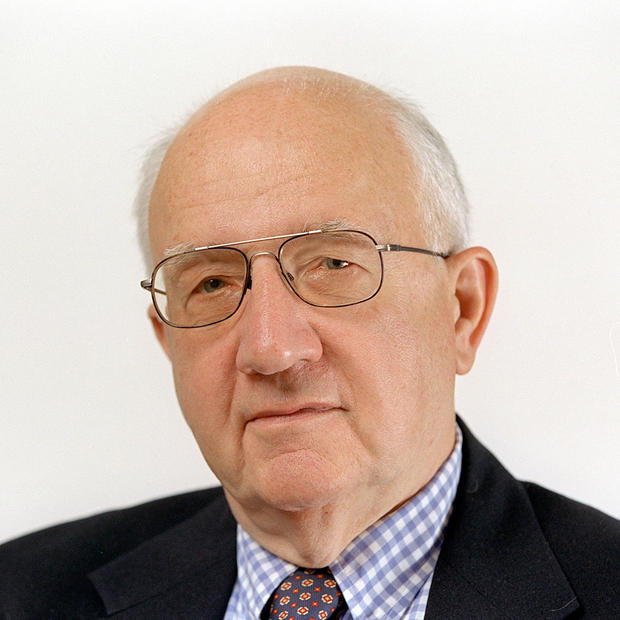The Seattle Times series this week on desegregration in Seattle schools falls at a time when the Seattle School Board is about to consider a new superintendent's plan for the schools and when, at the national level, the Obama-Clinton contest for the Democratic presidential nomination has brought debate about race back into the national spotlight.
Here in the far Northwest corner, Seattle often has been slow to recognize trends or experience elsewhere. That was never more apparent than in the late 1970s, when a well-meaning Seattle School Board voluntarily instituted busing for ethnic balance when communities elsewhere had pretty much given up on it.
Busing and its later cousin, affirmative action, instituted by President Nixon, followed historic court decisions and laws that by the mid-1960s had struck down discrimination and segregation. I was a part of that period, serving as assistant to Hubert Humphrey, who as Minneapolis mayor, senator and vice president, had led Democratic Party and liberal opinion on the issue. In 1948, Mayor Humphrey changed his party's historic position on civil rights with a stirring speech and minority platform plank at the Democratic Party's national convention. In 1964, as senator, he was the principal sponsor of the landmark Civil Rights Act, which banned all discrimination for or against any person on the basis of race, gender, religion, or ethnicity. In 1965, as vice president, he led Johnson Administration lobbying for the Voting Rights Act.
With legal remedies in place, Great Society-era civil rights leaders saw the principal task going forward as helping victims of past discrimination acquire the education and skills to lift themselves.
Such initiatives as Head Start, Title I of the Elementary and Secondary Education Act, and Job Corps were examples of such a strategy. With housing segregation ended, it was thought that citizens of all races would move more freely among communities and neighborhoods.
The Great Society education and jobs initiatives worked. Neighborhood patterns did begin to change. But, to the surprise of some, people of all races and ethnicities tended to stay in the same neighborhoods where they historically had lived — even if economically able to move elsewhere.
In the old South, segregated "private academies" — mainly Christian — sprang up in many places in response to desegregation. Public schools were becoming increasingly black. Wanting to hasten desegregation, courts ordered busing to establish racial balance. This generated more white flight to private schools or to suburbs. The same court-ordered remedies began to be applied in northern school districts as well. De facto school segregation existed there not because of Christian academies but because of traditional neighborhood residential patterns.
In Washington, D.C., court-ordered busing so damaged the public school system that it has yet to recover. In the late 1960s, black kids from various parts of the city began to be bused into predominately white Northwest Washington. My own children's public school provided a good example. Buses from the southwest part of the city deposited black kids at the school door minutes from the opening bell and took them home immediately after the closing bell. Their parents, now living miles from their children's school, did not participate in PTA and other school activities. Within two years, instructional levels had fallen back a full grade level. Within four years, most white parents had placed their children in private schools or had moved to the suburbs. They did not do so because of their racism. They did so because they wanted good educations for their kids. There are only a handful of white children remaining today in D.C. public schools.
Black parents, at the same time, began to become restive as their children were bused out of home neighborhoods to others where they were strangers. They found, too, that busing was costing money that might otherwise be spent in upgrading classroom instruction. Later, many would transfer their own children to religious and charter schools where they felt educational standards were higher.
National Political Effects
As busing proceeded, national liberal leaders were quite skeptical. But, not wanting to fight court decisions, and in deference to those black leaders who favored busing, they largely kept silent. Senator George McGovern, in 1972, proposed to his presidential campaign advisors that he outrightly oppose busing. But he was dissuaded because it was thought such opposition would be misunderstood.
My friend Harry McPherson, former White House counsel to President Johnson, sent me a note last week to remind me that Johnson was the last Democratic presidential candidate to carry a majority of white voters (in 1964).
In 1968, following Humphrey's narrow defeat by Richard Nixon (in an election in which George Wallace also drew millions of votes), post-election data showed his defeat not to be due to defection of peace voters — most returned to Humphrey by election day — but to the loss of traditional Democratic white voters in northern industrial states who identified Democrats with such unpopular measures as busing. Those voters have never fully returned to the Democratic Party. After Ronald Reagan's 1980 presidential campaign victory, they came to be called Reagan Democrats.
Reagan Democrats remain a challenge to national Democrats. In the present nominating contest, some have voted for Sen. Hillary Clinton; few have voted for Sen. Barack Obama. If, as anticipated, Obama becomes the nominee, he will have an uphill task in trying to reclaim them, given his associations with his controversial pastors and a 1960s radical bomber. These voters are not racist. They reject people and ideas they believe are outside mainstream values.
Seattle Takes Stock
The so-called Seattle Plan, busing public-school students out of their home neighborhoods to create racial balance, was instituted in January, 1978 — at a time when compulsory busing had largely been discredited elsewhere in the United States and was dramatically losing political support.
Not surprisingly, the same thing happened in Seattle as had happened elsewhere. Many parents put their kids in private school. Others moved to the suburbs and enrolled their children in those school systems. Remaining children in the public school system were disproportionately poor and of minority ethnicity. Thirty years after the Seattle Plan was implemented, Seattle has fewer school children than any major city but San Francisco. Due to many factors — only one being middle-class flight in response to perceived failings in our school system — it is a rich-poor city missing the core middle-income families that normally constitute the heart of any community. The school system's test scores, dropout and truancy rates, and disciplinary problems have been at unacceptable levels for many years. In the meantime, another kind of school transportation has been implemented: Children are voluntarily leaving their home neighborhoods to enroll at public schools where they believe they can find better educations.
What is now being discussed but has not been implemented: New, common sense policies that will strive for excellence in education in all Seattle public schools, in all neighborhoods, without regard to ethnic or other population patterns in those neighborhoods. Good schools for everyone, everywhere — not a difficult concept to understand but one that has not been implemented in our city.
Seattle citizens and parents are properly concerned that some of its schools are largely white and others largely black, Asian or Latino. But the remedy is not to implement arbitrary policies that move kids from one school to another, just to achieve greater ethnic balance in all schools. It is to create good schools in all neighborhoods, open to all who live in those neighborhoods. That is where civil rights leaders of the 1950s and 1960s thought they were heading until years were lost in the blind alley of busing.



